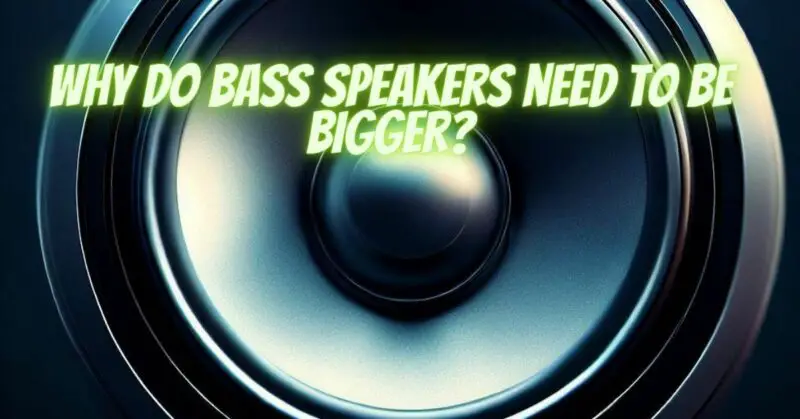When it comes to sound systems, especially those designed for deep and powerful bass, you may have noticed that bass speakers tend to be larger in size. But why is this the case? In this article, we’ll delve into the science behind bigger bass speakers and why they are essential for reproducing low-frequency sounds accurately and effectively.
Understanding Sound Frequencies
To comprehend the necessity of larger bass speakers, it’s crucial to grasp the fundamentals of sound frequencies. Sound is a series of pressure waves that travel through a medium, typically air, at various frequencies, which we perceive as different pitches. These frequencies are measured in Hertz (Hz), with lower frequencies indicating deeper, bassier sounds.
- The Role of Speaker Size
The size of a speaker directly impacts its ability to reproduce specific frequencies. In general, larger speakers are better at handling lower frequencies due to their increased surface area and greater air displacement. When it comes to bass, the speaker needs to move more air to create those deep, resonating tones. This is where bigger bass speakers come into play.
- Resonance and Efficiency
Bigger bass speakers are designed to resonate at lower frequencies efficiently. Resonance occurs when the speaker’s diaphragm moves back and forth to produce sound waves. For lower frequencies, a larger diaphragm has more surface area to generate these waves, resulting in a more pronounced and powerful bass response. Smaller speakers struggle to displace enough air to produce these low-frequency vibrations effectively.
- Improved Sound Quality
Larger bass speakers not only provide a more robust bass response but also contribute to improved sound quality overall. They can reproduce bass frequencies with greater accuracy and clarity, reducing distortion and muddiness often associated with smaller speakers attempting to produce deep bass.
- Impact of Cabinet Design
The cabinet or enclosure housing the speaker also plays a crucial role in bass reproduction. Larger speakers require more extensive cabinets to allow for optimal airflow and resonance. These enclosures help minimize unwanted vibrations and ensure that the bass frequencies are projected efficiently.
- Subwoofers: Specialized Bass Speakers
Subwoofers, often the largest speakers in a sound system, are specifically designed for bass frequencies. They can range in size from 8 inches to 21 inches or more. Subwoofers use their substantial size to move a significant volume of air, creating the powerful, chest-thumping bass that audiophiles and music enthusiasts love.
- Matching Speaker Size to Application
The size of the bass speaker required depends on the application. For home audio systems, larger floor-standing speakers or subwoofers are ideal for delivering room-filling bass. In car audio systems, dedicated subwoofers in the trunk are often employed to achieve impressive bass in a limited space.
In the world of audio, the need for bigger bass speakers is rooted in physics and the science of sound. These larger speakers are better equipped to handle lower frequencies efficiently, resonating with power and accuracy. Whether you’re setting up a home theater system, designing a car audio setup, or just looking for that satisfying bass drop in your music, understanding the importance of bigger bass speakers can help you choose the right equipment for a more immersive and enjoyable listening experience.

